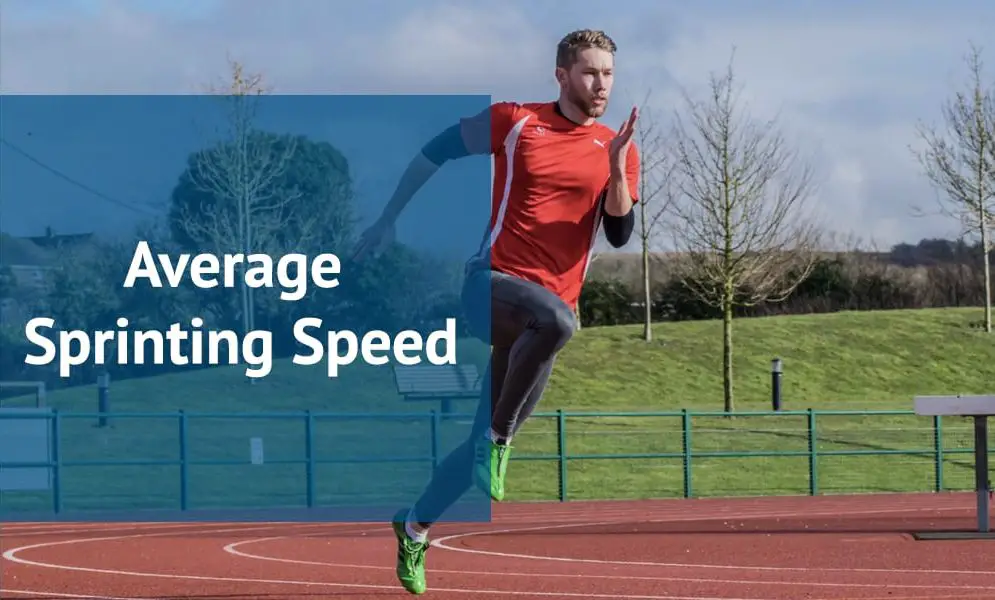Average Sprinting Speed of a Human: Unlocking the Secrets of Human Speed
Sprinting is an exhilarating athletic activity that showcases the pinnacle of human speed and power. Many people are curious about the average sprinting speed of a human and what factors contribute to achieving exceptional performance on the track. In this article, we delve into the fascinating world of sprinting and explore the factors that determine the average sprinting speed of a human.

Sprinting Speed of a Human
1. Understanding Sprinting Speed:
Sprinting speed refers to the maximum velocity that an individual can achieve during a short-distance sprint.
It is measured in meters per second (m/s) or miles per hour (mph).
This explosive burst of speed requires a combination of physical attributes, technique, and training.
2. Factors Influencing Sprinting Speed:
a. Genetics:
Genetic predisposition plays a significant role in determining an individual's sprinting speed.
Certain genetic factors, such as muscle fiber composition, muscle structure, and body type, can contribute to faster sprinting speeds.
However, it is essential to note that genetic potential can be optimized through training and proper technique.
b. Muscle Strength and Power:
Muscle strength and power are critical for generating the force required for sprinting.
Powerful leg muscles, particularly the quadriceps, hamstrings, and calf muscles, contribute to generating explosive speed.
Strength training exercises, such as squats and lunges, help improve these muscles and enhance sprinting performance.
c. Technique and Biomechanics:
Efficient running technique and proper biomechanics are crucial for maximizing sprinting speed.
Factors like stride length, stride frequency, arm movement, and body posture significantly impact an individual's ability to sprint at high speeds.
Coaches and trainers often focus on refining technique to optimize performance.
d. Training and Conditioning:
Sprinters undergo rigorous training and conditioning programs to improve their speed and endurance.
Training includes a combination of sprint-specific workouts, resistance training, plyometrics, and flexibility exercises.
These programs aim to enhance muscle power, explosiveness, and overall athleticism.

Sprinting Speed of a Human
3. Average Sprinting Speeds:
The average sprinting speed of a human varies depending on several factors, including age, gender, training level, and distance. While individual capabilities may differ, let's explore some general benchmarks:
a. 100-Meter Sprint:
Elite male sprinters can achieve speeds of around 37 km/h (23 mph), with the world record currently standing at 37.57 km/h (23.35 mph). Female sprinters typically reach speeds between 29-30 km/h (18-19 mph).
b. 200-Meter Sprint:
In a 200-meter sprint, the average speeds may drop slightly compared to the 100-meter sprint. Elite male sprinters usually reach speeds of 36 km/h (22 mph), while female sprinters can maintain speeds around 28-29 km/h (17-18 mph).
c. Marathon Runners:
While marathon running is different from sprinting, it is worth noting that elite marathon runners maintain an average speed of around 20 km/h (12 mph) over long distances. However, marathon running focuses more on endurance rather than pure sprinting speed.
4. Training Strategies to Improve Sprinting Speed:
a. Interval Training:
Interval training involves alternating between intense bursts of sprinting and periods of active recovery. This method improves cardiovascular fitness, increases anaerobic capacity, and enhances sprinting speed.
b. Strength and Power Training:
Incorporating strength and power exercises, such as weightlifting, plyometrics, and explosive jumps, helps develop the muscle strength necessary for sprinting. These exercises also improve stride length and power output.
c. Proper Warm-up and Stretching:
A thorough warm-up routine prepares the body for intense sprinting sessions and reduces the risk of injuries. Dynamic stretches targeting the lower body, such as lunges, leg swings, and high knees, improve flexibility and range of motion.
The average sprinting speed of a human is influenced by a combination of factors, including genetics, muscle strength, technique, and training. While genetics may set the foundation, individuals can optimize their sprinting potential through targeted training programs and proper technique. By understanding the key elements that contribute to sprinting speed and implementing effective training strategies, individuals can strive to reach their maximum sprinting potential and unlock the secrets of human speed.